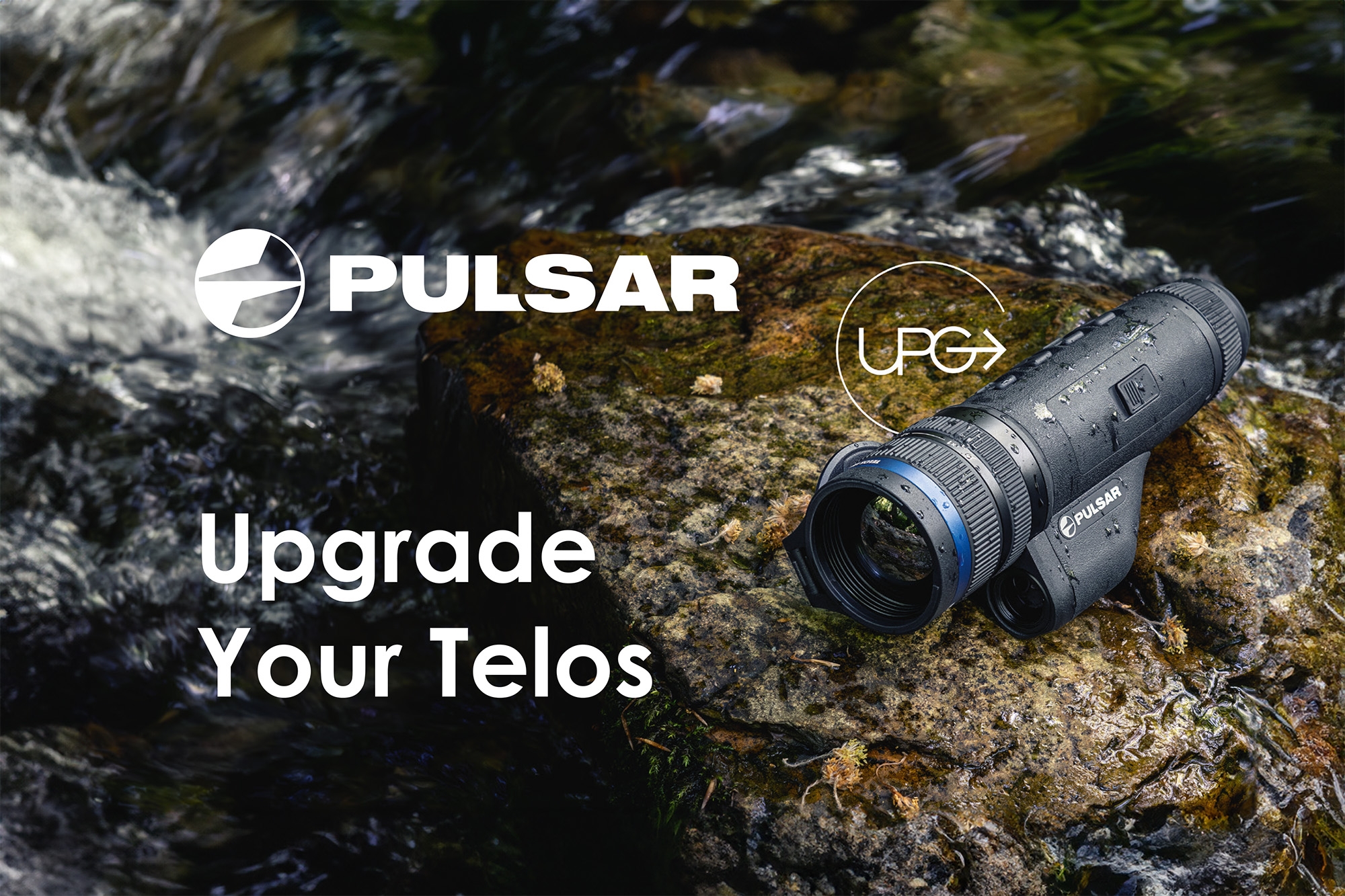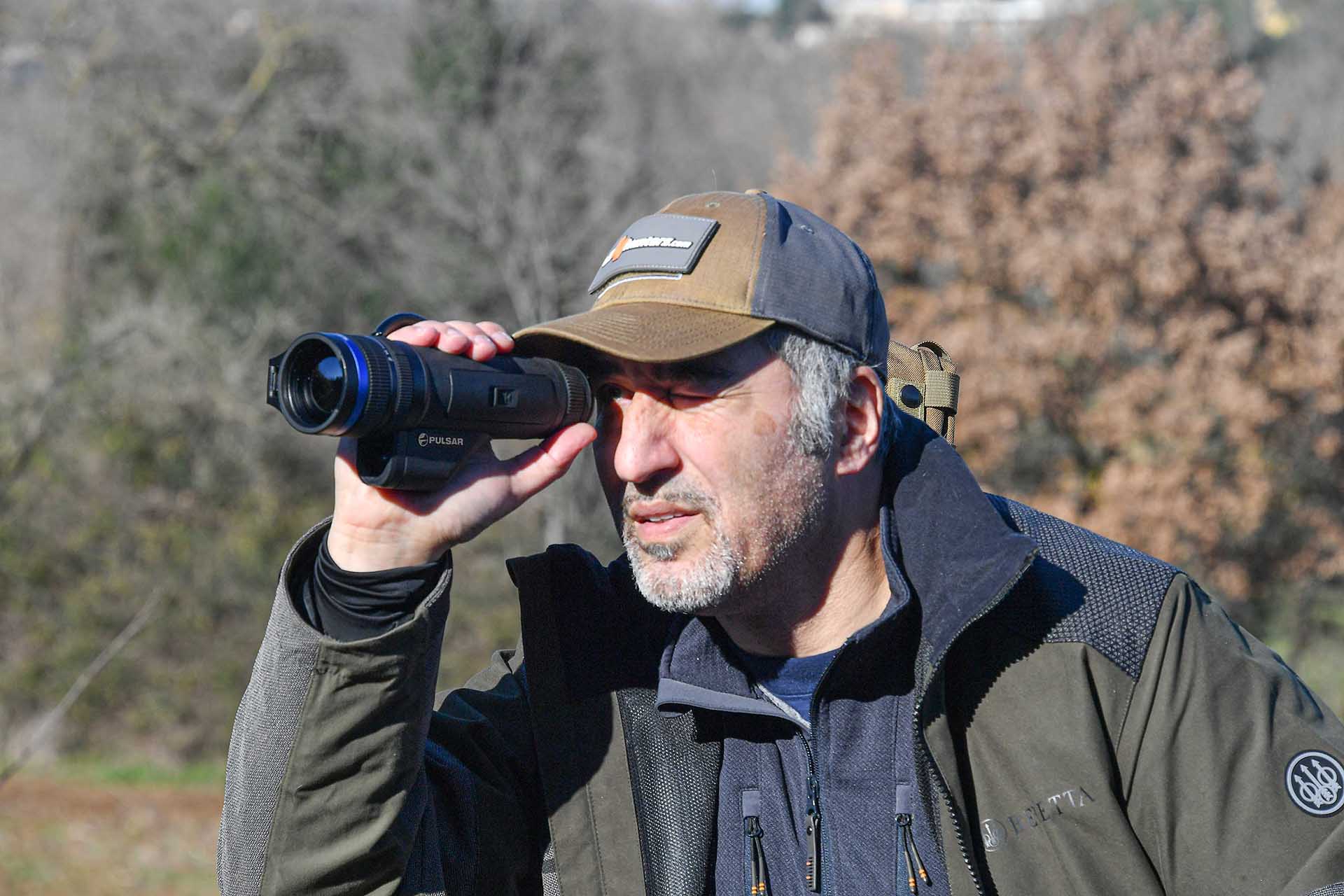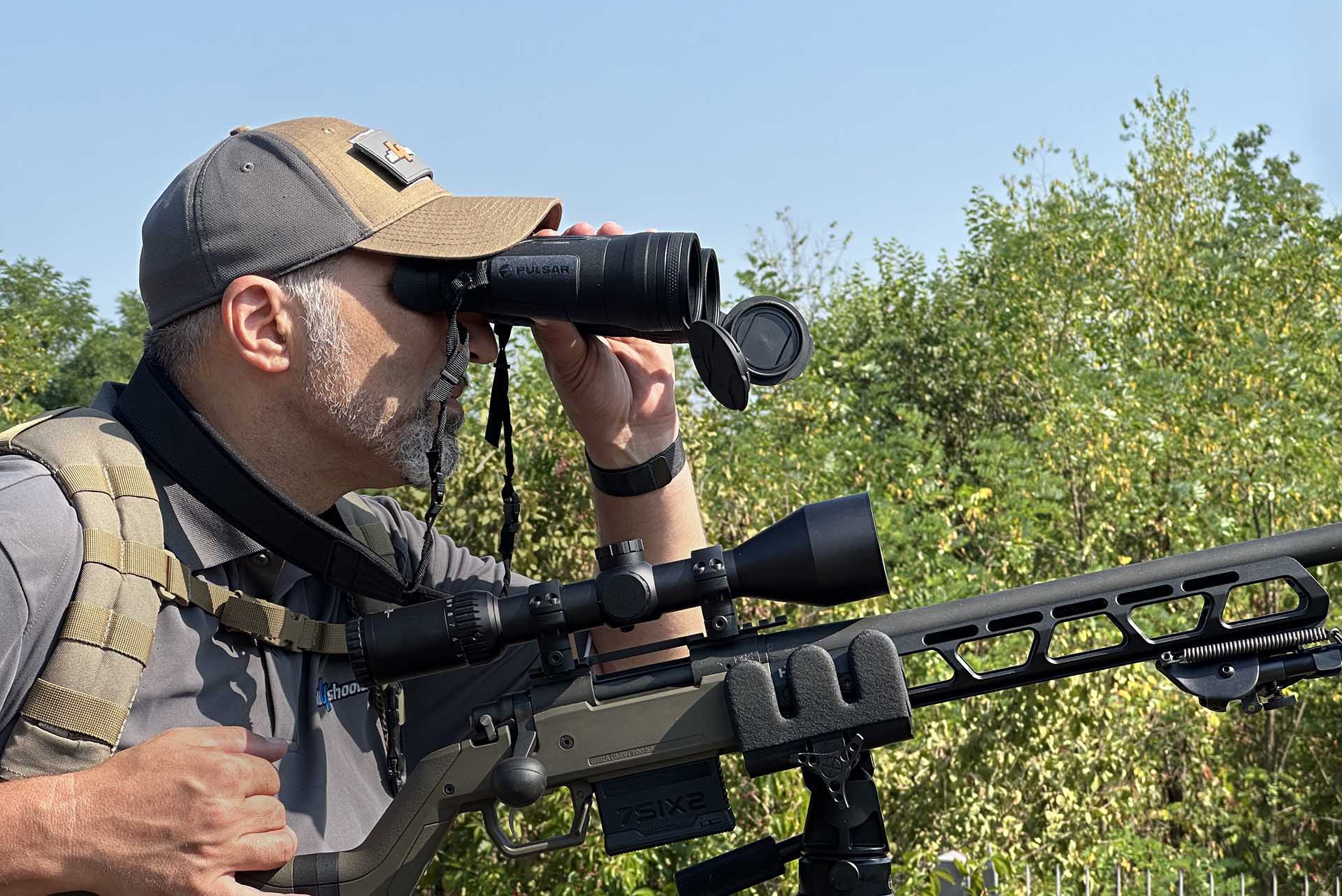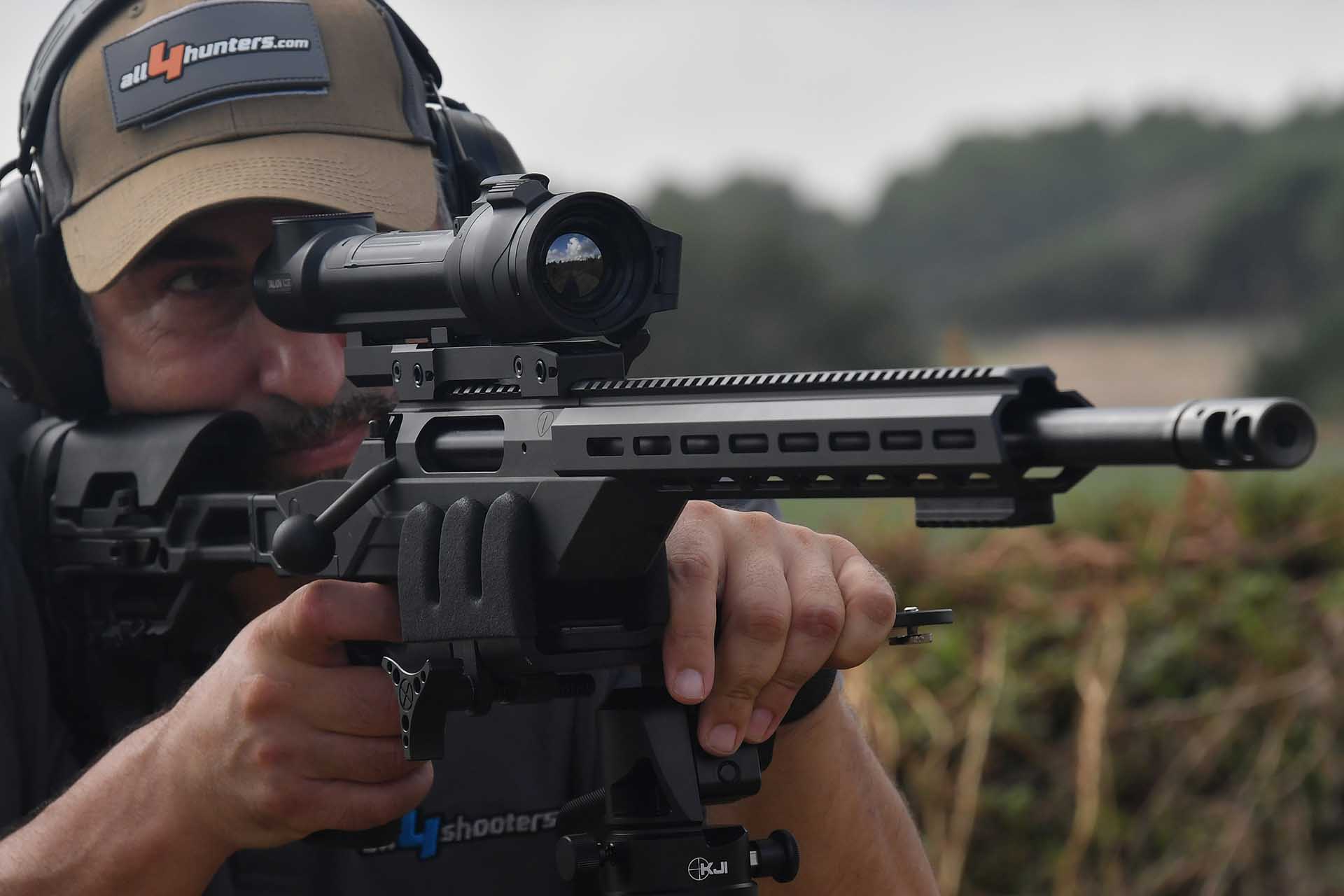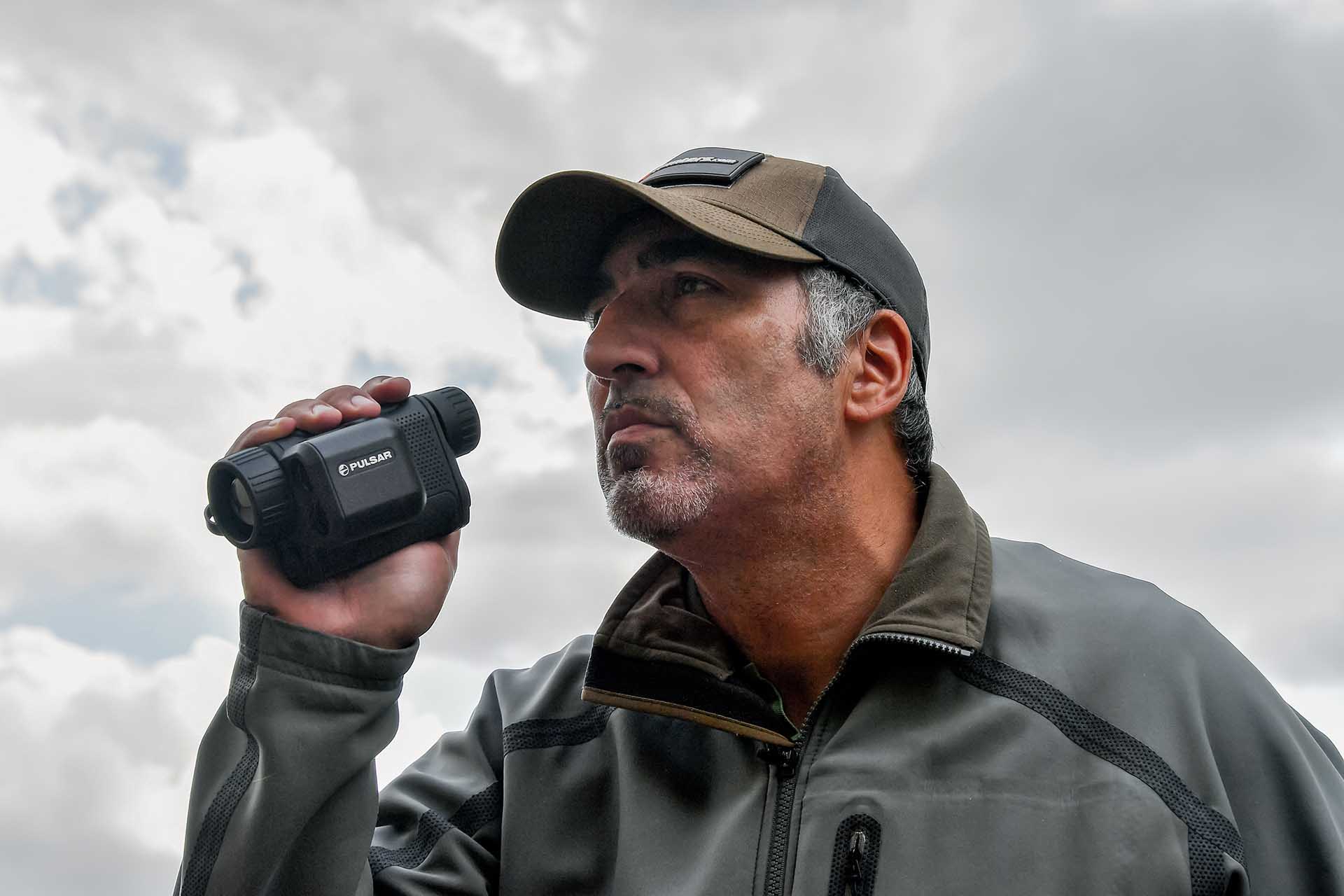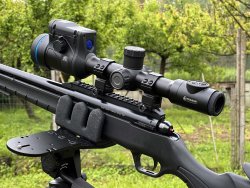
Pulsar's Thermion II range of thermal imaging riflescopes has now established itself as the standard hunting optics of choice for all competitors, in all price ranges of its models, in Europe and the rest of the world where it is legal to use such optics. The top-of-the-line Thermion 2 XL50 LRF version is based on an outstanding 50hz “full frame rate” sensor with 1024x768 High-Definition resolution, which I had previously had the chance to evaluate in the equally outstanding Merger XL50 thermal imaging binoculars. Obviously, I am repeating myself, since I had already stated this in my “first looks” article on the XL50.
The Lithuanian manufacturer sent me a sample of this excellent optic, with the latest firmware version already installed that allows – in addition to the improvements to the thermal processing engine – compatibility with the Stream Vision Ballistics add-on app module, which takes advantage of the built-in laser rangefinder and Thermion II's powerful internal processor to calculate the bullet drop based on the measured distance and the ammunition/gun characteristics entered into the software, displaying the POI (point of impact) as an “X” moving on the vertical axis of the reticle.
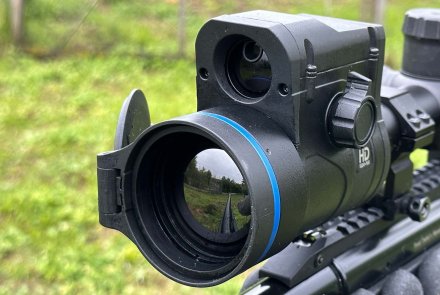
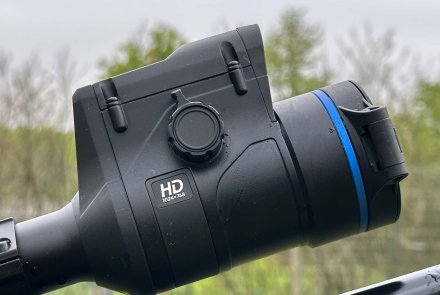
I will not dwell on the technical features of the scope, which I listed in the news story I linked above where I covered the XL50's market introduction and specs; rather, I will focus on the field use experience and handling impressions.
The sensor resolution of 1024x768 used in the optic, currently the state of the art for such sensors in the hunting market, allows for exceptional image definition, with an amazing dynamic range that is due to the excellent sensitivity of the European-made Lynred sensor. I would like very much to specify that the sensor is manufactured in Europe, as is the case with most other parts of the optic – including 100% of the assembly – because with the times we live in, having the availability in the EC of the manufacturer of the thermal sensor and all of the internal strategic technology is an added value both for the availability of the products and of the assistance not having to depend on supplies that for any reason could be interrupted.
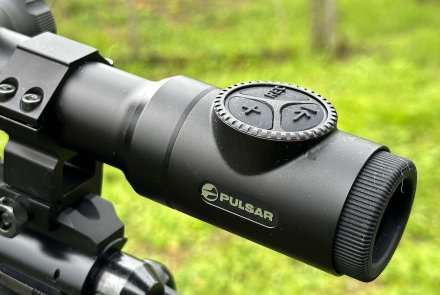
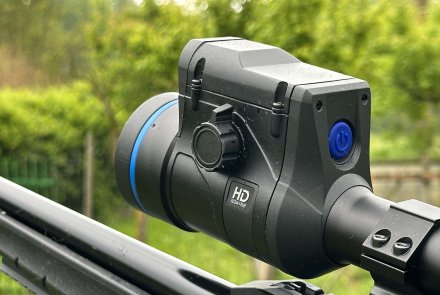
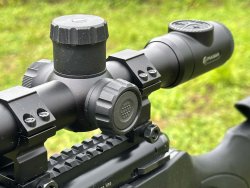
Coming back to the Thermion 2 XL50 LRF, why do I focus so much on the HD resolution of this optic? After all, with the XP50 Pro's 640x480 @25mK NETD sensor resolution you already get excellent, highly detailed images; but the HD resolution (and in the future even higher resolutions starting at 1280) is extremely important to allow an increase in magnification with useful images. The XL50's native magnification is 1.75x, which with the 8x digital zoom ratio, allows a maximum magnification of 14x. If we zoom in at 14x starting at 1024x768, our field of view is reduced to a central cropped – and enlarged to the display’s field of view – window with a resolution of 128x96 pixels. This may still be sufficient, though borderline, to make certain shot identification and placement at distances around 400 m. By contrast, under the same conditions, magnifying a 640x480 sensor (native magnification of 2x) to 14x results in a resolution of only 91x69. I could therefore argue that increased magnifications allow a lower native magnification (1.75x instead of 2x) for a better and wider observable field of view at the minimum zoom setting and with a greater useful magnification range.
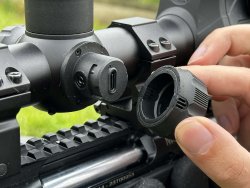
The ergonomics of the scope are as usual excellent, and the layout of the controls and functions are always the same; therefore, switching from one generation of a Pulsar optic to the next is like switching from your familiar Nikon (or Canon…) camera model to its next generation model: you already know how to operate it.
On the other hand, it is worth mentioning the excellent work done by Pulsar in designing and engineering the ballistic calculation function built into the optics, which is also featured in other models of the manufacturer. In addition to the free Stream Vision 2 management software for iOS and Android, one must also download the Stream Vision Ballistics app, with which we enter all the basic data for the calculation: height of the scope LOS, V0 speed of the bullet, ballistic coefficient, zeroing distance, and so on. Once the ballistic profile is created it can be uploaded to the scope memory, where we will then use it in the field.
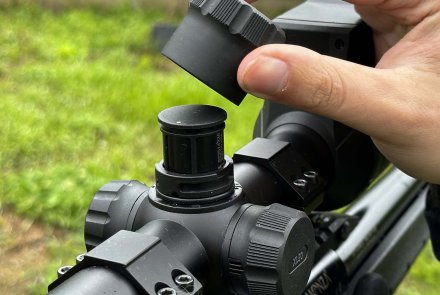
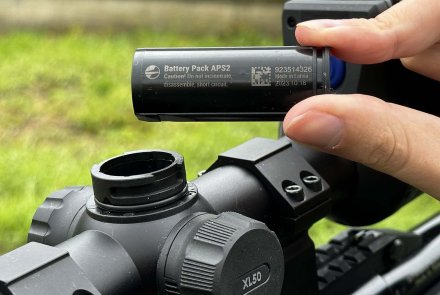
The app is also capable of making ballistic calculations directly without being connected to a Pulsar scope.
The ballistic calculation function is complemented by the built-in laser rangefinder of the Thermion II LRF XL50, which allows immediate calculation at the press of a single button with the indication of the new point of aim coinciding with the point of impact in relation to the measured distance expressed with a red cross on the reticle’s vertical line. The maximum measurable distance is 800 m, and it should be mentioned that the ability to display the crosshair with the calculated POI can easily get out of the field of view at maximum zoom especially with slow bullet calibers with very curved paths, e.g. the .45-70 Govt.
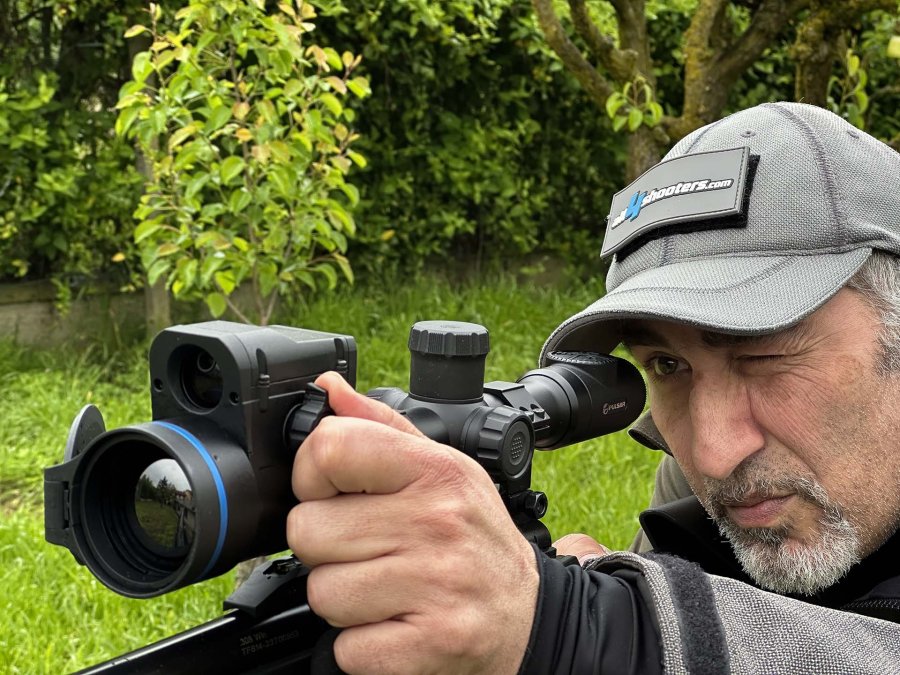
Shooting test with Pulsar Thermion 2 XL50 LRF scope mounted on Monza rifle in .308 Winchester

I mounted the test sample of the Pulsar Thermion 2 XL50 LRF riflescope on a Monza bolt-action rifle chambered in .308 Winchester from Turkish manufacturer Instanbul Silah, with adjustable cheek rest, ideal when using a scope featuring a large-diameter objective bell like this one.
The field of view and situational awareness that the low end magnification of 1.75x gives, in addition to the incredible definition and crispness of the image displayed by the eyepiece featuring an OLED microdisplay with sensor-identical resolution, is truly impressive. Going up in magnification the overall resolution drops but the Pulsar graphics processing engine manages to maintain great quality. In hunting, however, what I appreciated most was the built-in ballistic calculator: once the data is entered and the profile is loaded, the ballistic solution can suggest the point of impact on the reticle with excellent speed and accuracy, offering the same basic features as optics such as the Swaro dS or the Eliminator, but in a thermal version.
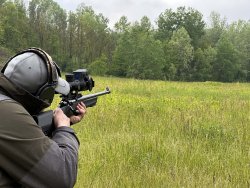
I have tried the ballistic calculation function at different distances in the range and, in hunting, I must say that it does its job very well. Obviously this is not a new feature, as it has been available on multiple Pulsar optics for over a year now. The app is easy to use although not exactly intuitive, and it is very stable on iOS devices, with which I tested it.
The scope comes with a remote control, which is very useful because it allows easy access to many controls, including key zoom, LRF measurement and ballistic calculation functions without changing the grip on the gun or moving hands and thus without disturbing sight picture and aiming.
The price is not the lightest, at this stage the Thermion 2 XL50 LRF is the flagship of Pulsar's thermal imaging riflescope range, at the very top in performance and quality; with the laser rangefinder and built-in ballistic calculator, however, you have an "unfair" advantage, capable of deciding the outcome of a once a lifetime hunt and the difference between an embarrassing miss (or worse, wounded, bolted and lost game) and taking home a prize winning trophy.
The new top-of-the-line Thermion 2 XL50 LRF thermal imaging hunting riflescope is available on the market at a suggested retail price of 6590 euros, with a wealth of accessories and carrying bag included.
For more information, visit www.pulsar-nv.com.





